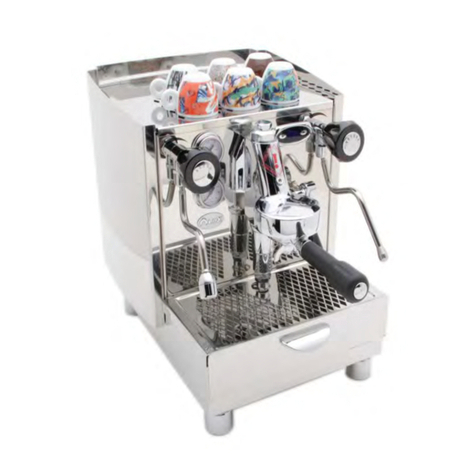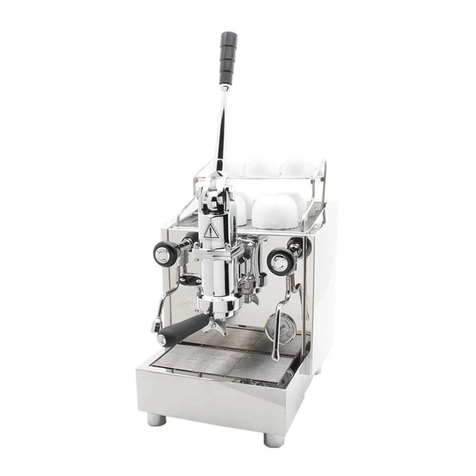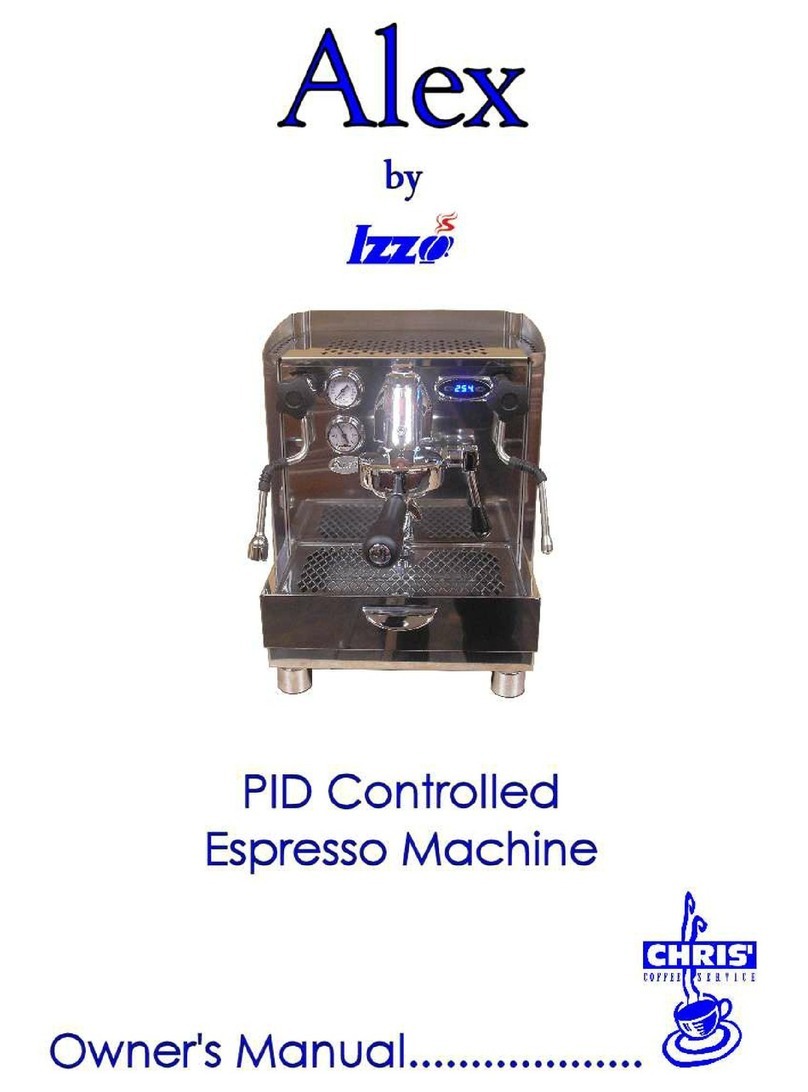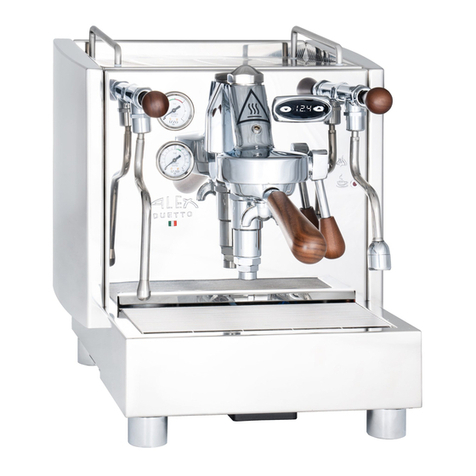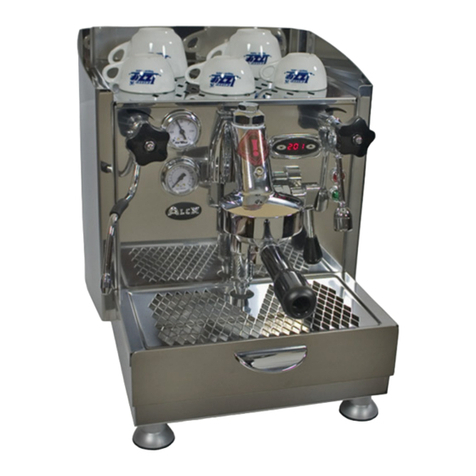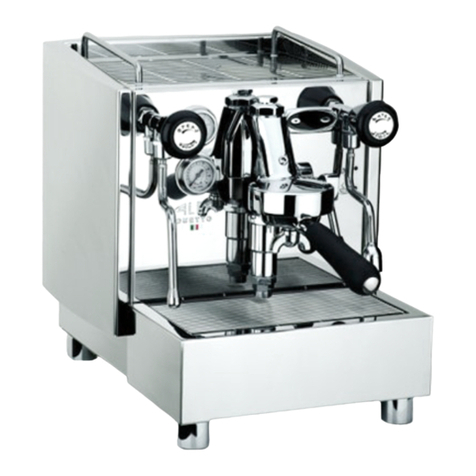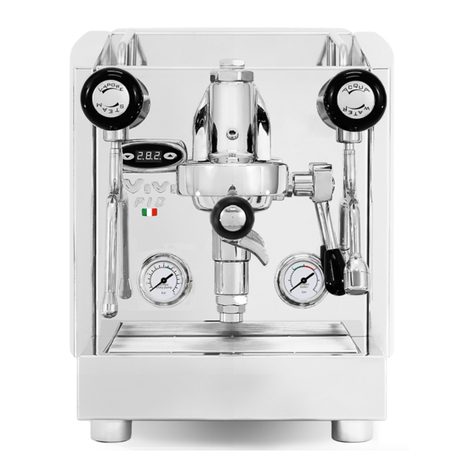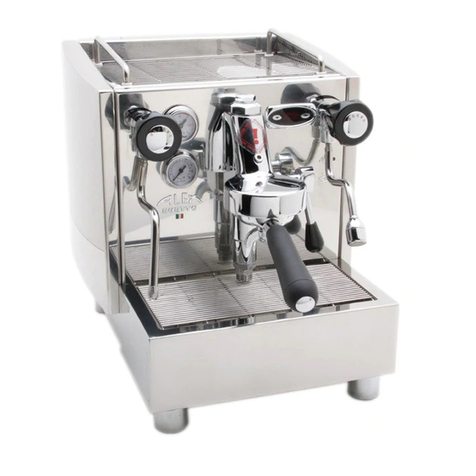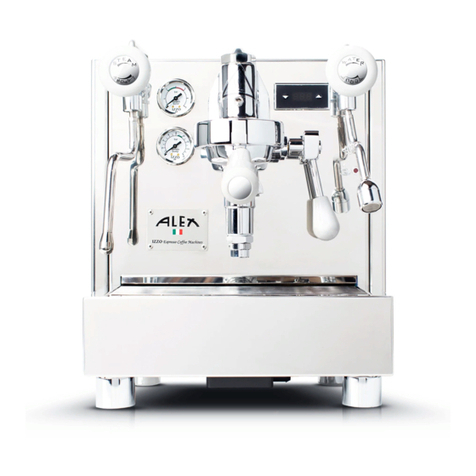Adjust your grind so that when you activate the pump, the flow of coffee coming
out of the portafilter spout looks like the tapered tail of a mouse and has
approximately the thickness of ballpoint pen filler. Your pump pressure gauge
should read somewhere between 8 to 9 bar.
Now, last but not least, when is it done? The coffee tells you when it is finished;
simply observe the color of the crema. When the crema changes from a reddish
brown color to a lighter blond color, it is done; stop brewing by pressing the lever
all the way down. If you run the pump after the color has changed to light blond,
you will only dilute the coffee and extract undesirable bitters.
You have to admit that is a lot easier than using shot glasses and timers!
Tip: Get into the habit of disposing of the spent grounds immediately after
brewing espresso. After disposing of the grounds, return the portafilter to the
group and lift the lever up for three to five seconds to rinse away excess oils and
loose grounds. By regularly following this procedure, you will greatly reduce the
tar-like buildup on the dispersion screen that occurs if you allow coffee oils to dry
and bake on the hot group.
First, let’s talk about some of the first things you need to learn in order to become
‘Barista-like’ in your techniques.
Milk –Whole milk works best to steam, both in technique and in flavor! Lower fat
milks contain mostly water which will not foam well and will be almost tasteless when
steamed. After all your hard work you will be left with a less than desirable tasting
beverage.
Milk – Your whole milk needs to be as cold as possible to ensure the creamiest,
sweetest, and best tasting micro-foam. Once the milk has reached a temperature
between 150-160 degrees, you must stop the process. The longer amount of time
you have with the cold milk gives you that extra time to continue making the milk
creamy and sweet tasting. Milk heated above 160 degrees will be burnt and taste
terrible.
